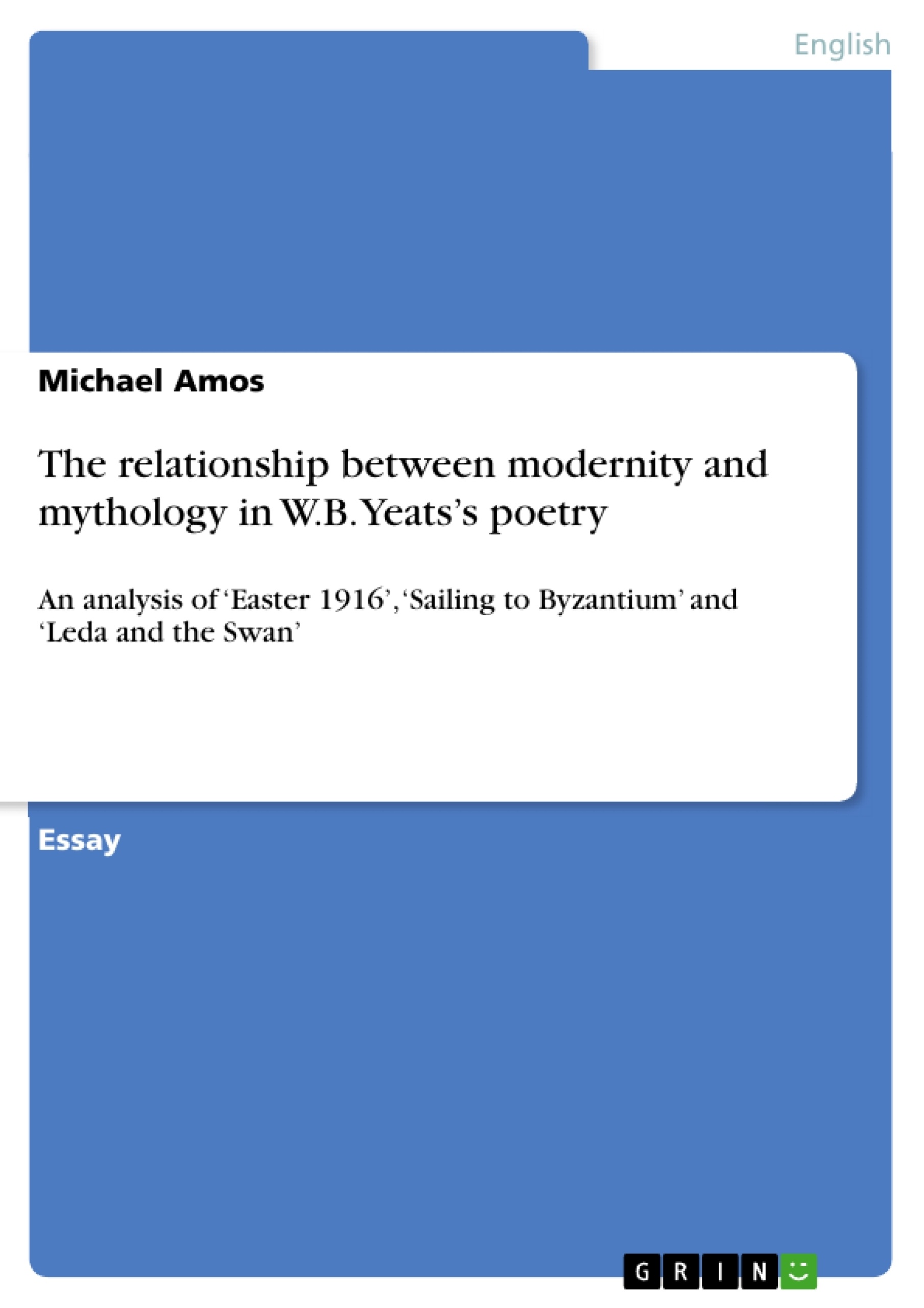This essay will examine the relationship between mythology and modernity in relation to Yeats’s poetry, and its role and importance within the Irish tradition. I will analyse in-depth the poems ‘Easter 1916’, ‘Sailing to Byzantium’ and ‘Leda and the Swan’, while paying close attention to the form, language and the argument Yeats is trying to make.
Anthony Bradley states that ‘Yeats also saw in Irish myth and legend the hidden and primitive religious energies that could be assimilated to Irish nationalism, and which were not available to modern churches, Catholic or Protestant’. The tension between mythology and colonisation is apparent in his poetry, where a balance must be struck and maintained. Yet, while true history is key to Yeats, Daniel Gomes on Yeats explains that myth was beginning to be seen less ‘as representative of crude racial typographies and instead began to underscore the archetypal themes and structural patterns found in myths, legends, and folklore across national traditions’.
I will use M. L. Rosenthal, The Modern Poet to analyse the ways in which Yeats intends to grasp and understand the modern mind; while also exploring in-depth his aversion to modernity in the work of Michael North. Rhythm being crucial to the task of crafting effective poetry, I will engage with the work of Michael Golston to further my argument on the importance of form and structure within Yeats’ poetry.
Inhaltsverzeichnis (Table of Contents)
- The relationship between modernity and mythology in Yeats's poetry.
- Easter 1916
- Sailing to Byzantium
- Leda and the Swan
Zielsetzung und Themenschwerpunkte (Objectives and Key Themes)
This essay explores the relationship between mythology and modernity in Yeats's poetry, focusing on how these elements interact within the Irish tradition. The analysis examines three key poems, 'Easter 1916', 'Sailing to Byzantium', and 'Leda and the Swan', paying close attention to form, language, and the arguments Yeats presents.
- The tension between mythology and colonization in Yeats's work.
- Yeats's complex relationship with modernity and his aversion to its aspects.
- The role of mythology as a tool for understanding and mediating conflicting values and ideals.
- The importance of form and structure in Yeats's poetry, particularly the use of rhythm and imagery.
- The interplay between the conscious and subconscious mind as revealed through Yeats's poetry.
Zusammenfassung der Kapitel (Chapter Summaries)
- 'Easter 1916': This poem explores Yeats's evolving perspective on Irish nationalism. It examines the sacrifices made during the Easter Rising, questioning whether they were made for the right reasons and highlighting the potential dangers of blind faith. The poem uses the imagery of the "enchanted stone" to represent both the potential greatness and the potential limitations of the Irish national identity.
- 'Leda and the Swan': This poem delves into the themes of sexual mystery, oppression, and inspiration. The myth of Leda's rape by Zeus in the form of a swan provides a framework for examining the complexities of power dynamics and the potential consequences of assimilating knowledge from a dominant force. The poem uses rhythm and language to explore the interplay between history, the unconscious, and the act of writing itself.
- 'Sailing to Byzantium': This poem presents the poet as an old man caught between the material world and the desire for a transcendent realm. It explores the relationship between science, religion, and art, and how the imagination can help us discover truth. The poem highlights the power of poetry to shape and direct human life, and its role in bridging the gap between the conscious and subconscious.
Schlüsselwörter (Keywords)
This essay focuses on key terms and concepts such as Irish mythology, modernity, colonialism, form, structure, rhythm, imagery, the conscious and subconscious mind, nationalism, and the role of poetry in shaping human life. It examines Yeats's complex relationship with these themes and his attempt to balance traditional Irish culture with the forces of modernization.
- Quote paper
- Michael Amos (Author), 2016, The relationship between modernity and mythology in W.B. Yeats’s poetry, Munich, GRIN Verlag, https://www.grin.com/document/339727



